Imaging of Hypersensitivity Pneumonitis
- PMID: 27719974
- PMCID: PMC6571018
- DOI: 10.1016/j.rcl.2016.05.013
Imaging of Hypersensitivity Pneumonitis
Abstract
The management of hypersensitivity pneumonitis (HP) depends on early identification of the disease process, which is complicated by its nonspecific clinical presentation in addition to variable and diverse laboratory and radiologic findings. HP is the result of exposure and sensitization to myriad aerosolized antigens. HP develops in the minority of antigenic exposures, and conversely has been documented in patients with no identifiable exposure, complicating the diagnostic algorithm significantly. Prompt diagnosis and early intervention are critical in slowing the progression of irreversible parenchymal damage, and additionally in preserving the quality of life of affected patients.
Keywords: High-resolution computed tomography; Hypersensitivity pneumonitis; Interstitial lung disease; Parenchymal lung disease.
Copyright © 2016 Elsevier Inc. All rights reserved.
Figures






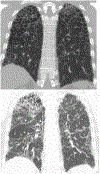

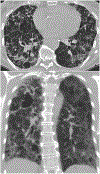
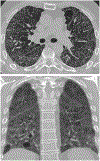
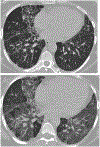

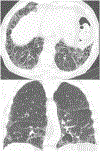




References
-
- Demedts M, et al., Interstitial lung diseases: an epidemiological overview. Eur Respir J Suppl, 2001. 32: p. 2s–16s. - PubMed
-
- Dakhama A, et al., Common respiratory viruses in lower airways of patients with acute hypersensitivity pneumonitis. Am J Respir Crit Care Med, 1999. 159(4 Pt 1): p. 1316–22. - PubMed
-
- Wang SZ, et al., Adhesion molecule expression on epithelial cells infected with respiratory syncytial virus. Eur Respir J, 2000. 15(2): p. 358–66. - PubMed
-
- Cormier Y and Israel-Assayag E, The role of viruses in the pathogenesis of hypersensitivity pneumonitis. Curr Opin Pulm Med, 2000. 6(5): p. 420–3. - PubMed
Publication types
MeSH terms
Grants and funding
LinkOut - more resources
Full Text Sources
Other Literature Sources
Medical
Research Materials
Miscellaneous

